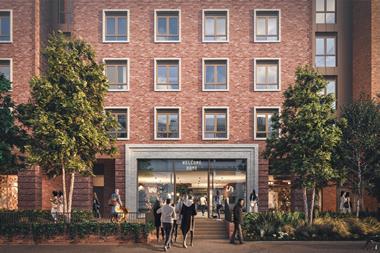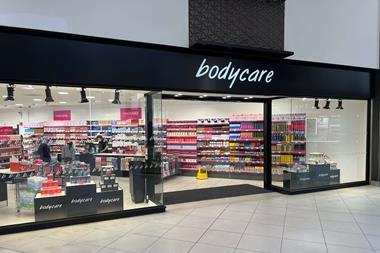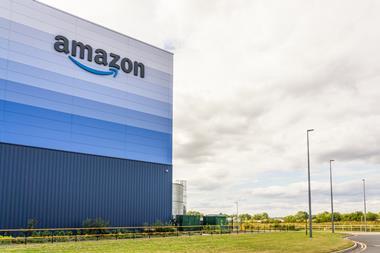Stagflation, the conflation of stagnation and inflation, was the terror that stalked the land in the 1970s, bringing in its wake the three-day week, high levels of unemployment and the sense that the UK had gone to the dogs.
Fortunately, matters are less severe now, largely because of the Bank of England’s paranoia about interest rate cuts and the effect they might have on the wider economy. But there can be little doubt that there are fewer homebuyers than there were a year ago and many areas of retail are suffering the consequences.
And there are few places where you might imagine this would be more keenly felt than at retail parks. Speak to any agent and it doesn’t take long to discover that retailers such as B&Q – which has been under the cosh because of the diminishing numbers of home improvers – and some of the larger electrical concerns, such as Currys and PC World, are markedly less active in their demand for retail park properties than they have been in the past.
By this reckoning, you might be forgiven for supposing that voids would be appearing across the country at retail parks and that landlords would be falling over themselves to find tenants in a blighted market. Yet, while things are certainly slower than they have been, there is still a certain amount of activity.
Harvey Spack Field director Stephen Yarnold says: “There’s still tenant interest, somewhat contrary to one’s expectations. A lot of retailers are pulling in their horns. There’s no expansion in the electricals sector and the DIY market is out to lunch. But there are still new tenants out there.”
Yarnold notes, however, that while “rents are not going down, incentive payments [for new tenants at retail parks] are going up”. He says that, although it has been perfectly normal practice in the past for tenants to be offered an initial rent-free period to get them to sign on the dotted line, things have swung in retailers’ direction. Sweeteners such as “a six-figure sum to an incoming tenant to help with shopfitting” are now becoming quite normal, according to Yarnold.
All of this indicates a tenants’ market and – for those who are active – it would appear there are deals to be done. But this is not necessarily reflected in the level of rent. Savills head of out-of-town retail Martin Supple says: “They’re holding their ground, generally. There’s actually a big enough pool of tenants to keep the market moving forward.” He says that this translates, at the top end, to tenants continuing to pay about£90 a sq ft (£969 a sq m) for space at Leicester’s Fosse Park and that for parks with Open A1 consent, the norm is£30 to£40 a sq ft (£323 to£431 a sq m).
However, there is relatively little upward movement in all of this. Jason Holden, an associate at retail warehouse consultancy Edgerley Simpson Howe, says: “I think the days of doing deals on retail parks, where you could add£10 per sq ft just by changing tenants, have gone. Nowadays, it’s more likely to be between 50p and£1, which, if you take into account the cost of buying out a tenant, doesn’t work as a proposition.”
So, which retailers are looking for new space and what size units are they looking for? Once electricals, DIY and carpets have been – effectively – discounted, it is the fashion retailers and some of the newer value entrants that seem to be making the running.
Mike Clare is founder and managing director of bed retailer Dreams, one of the active retailers referred to by Supple. “We’re inundated with offers at the moment,” he says. Clare wants to open 50 stores this year, with the majority likely to be at retail parks. “We’re a strong tenant. We advertise a lot and so we bring people to the parks. We’re an attractive tenant,” he adds.
Clare is clearly adopting the anchor tenant stance and looking for deals as a consequence. He is also of the opinion that there will be deals to be done later in the year when he believes the furniture sector will struggle. “This year, we will have two or three bulky goods tenants going bust – that is guaranteed. So landlords will be panicking a bit,” he says.
Of course, if enough people say there is trouble ahead, it can become a self-fulfilling prophecy. And it is in Clare’s interest for the retail park market to be weak, because Dreams is seeking to expand. Supple takes a more optimistic view. “I was thinking that Christmas could undermine a couple of retailers, particularly in the furniture sector. There seems to be a furniture retailer going phut every couple of years and there hasn’t been one recently,” he says.
This may be tantamount to saying that there is a retail park crash waiting to happen, but Supple stops short of saying so. He points to New Look, River Island, Marks & Spencer and Dunelm as examples of retailers that are looking to take space at retail parks and is particularly upbeat about the latter. “Dunelm is a fantastic business. It can sit in a retail park, but is a sufficient pull that it can operate as solus stores as well,” he says.
John Gatley, managing director of retail park operator and owner The Junction, says that rental growth may not be heading north, but this does not mean that prospects are bleak. “A number of new entrants have entered the market, specifically those retailers that focus on home store concepts.” He cites Home Retail Group’s first Home Store + More in Aylesbury and TK Maxx’s decision to open five HomeSense shops as cases in point.
“The effect of these entrants has demonstrated good quality tenant demand that, while not necessarily providing rental growth, is creating some activity in an otherwise difficult bulky goods market,” he says.
Along with Supple and Yarnold, Gatley also notes the trend in which retail park retailers are opting to operate from units of about 7,500 sq ft (695 sq m), whereas the standard used to be 10,000 sq ft (930 sq m).“Retailers are focusing on occupational costs and demand for smaller units of 7,500 sq ft or less on retail parks is increasing,” he says. The rationale behind this shift is that if turnover is not following an upward path, then the one way of bringing about positive figures is to contain costs and this can be realised from smaller properties.
Tenants’ extra
In the present tenants’ market, this is likely to prove something of a headache for landlords when coupled with the other trend, which is the continuing clamour for units that contain a mezzanine floor. At this point, the planning climate comes into play. Retail parks where landlords can show evidence of flexibility in relation to changing use or slicing big boxes into smaller units, or both, are the ones that will attract potential tenants that are looking around.
A report from Cushman & Wakefield puts growth in the retail warehousing sector last year at just 0.16 per cent – its lowest in 20 years. But even this somewhat gloomy outlook masks a fragmented picture. The survey says that there has been a “divergence in rents between primary and secondary” schemes and that those parks with Open A1 consent continue to experience relatively strong demand.
It is also worth noting that, while business may be looking a little sticky at certain retail parks, this does not mean that demand is going to dry up any time soon. It’s just that the shape of the demand is set to change. Supple notes that Costa Coffee is looking to take sites at UK retail parks, because it sees an opportunity to move into a relatively underdeveloped market. “It’ll work in the right locations,” he says.
While this may be something of a truism, it does illustrate the point that even the most well-developed and finely honed retail formats are being more selective when deciding where to take the retail park plunge.
Wilkinson Williams partner James Potter sums it up. “There have been some fairly negative stories about retail parks, but things are actually fairly static and there is some movement. On the bulky goods side, there have been a number of new entrants and they’re cutting their cloth according to the market,” he says.
A good time to be a retailer in search of suitable properties at retail parks, then.


























No comments yet